The piece of the month of September 2016
TAUROBOLIO OF THE ROMAN VILLA OF ARELLANO.
A CURIOUS INITIATION RITE IN ANCIENT NAVARRE
Carmen Jusué Simonena
UNED Pamplona
The arrival of Romanization in Navarre, in addition to the installation of cities of a certain importance, the rural areas were covered with a dense network of residences of agricultural landowners, the villae, which were originally rural dwellings whose buildings formed the center of an agricultural property and later became large aristocratic residences combining residential and productive functions in such a way that from an architectural and artistic point of view they constitute one of the most notable modalities of the Roman Building , given that they are frequently not only luxurious residences but also the center of a society that was sometimes autarchic, tending, at the very least, towards self-abasement. The villa of Liédena, those of Falces, that of Arellano or that of Ramalete de Tudela are examples of this new conception of demographic structuring in the low imperial period, although many of them have their roots in previous centuries.
Among them, the villa of Arellano stands out, a rural agricultural exploitation, where the Roman aristocracy lived with an elegant and sumptuous mansion. It is located in the municipality of Arellano, 6.5 kilometers from the town center. The existence of this archaeological site was known since the end of the 19th century, but it was not until 1985 when systematic excavations began under the direction of Mª Ángeles Mezquíriz, which have uncovered the Structures that can currently be visited.
Within the large group of buildings of the Roman villa of Arellano, a taurobolio was discovered. The word taurobolio designates the ritual sacrifice of a bull to obtain a baptism of blood. It is an oriental internship , imported to Rome by the worshippers of the goddess Cybele to whom the sacrifice of the bull was dedicated.
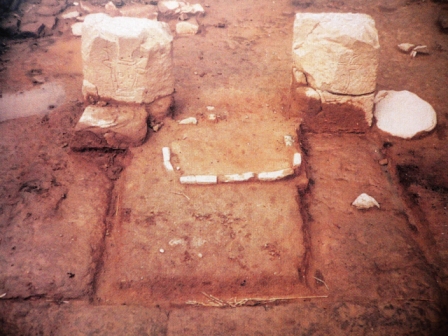
Taurobolio of the Roman villa of Arellano
The bull, a powerful animal that produces fear and admiration in man and, consequently, an attraction that is difficult to remove from his side, similar to that of an open abyss at his feet, has been present since ancient times in the various cultures born around the Mediterranean and the Middle East. As much in the Balkans as in Greece, Italy, the Iberian Peninsula, Egypt, Saharan Africa, Chaldea, etc., it appears as a singular and mysterious force, which has made it appear in a substantial way, again and again in the relations of men with the divinity, in mythology, in the first manifestations of art, in ritual sacrifices, in war, in amphitheater games, in hunting, in food or in death.
Symbol of fecundating power, of genesic force or vital propagation, it has been associated with the moon and its influences through its antlers. It is connected with the mythical figure of the Minotaur, with the Egyptian bull Apis, with the bullfighting dances of ancient Crete, or with the cult of Mithras that was practiced by the Roman soldiers since it had initiation rites in one of its fundamental moments, which was the sacrifice of the bull. An act of great symbolic importance, which refers to a primordial beast in which the initial energies of life were concentrated.
But together with the cult of Mithras associated with the sacrifice of the bull, there are also other Roman gods that maintain this association. This is the case of the goddess Cybele and Attis, whose rite around the bull sacrifice is known in this Roman villa of Arellano.
The building that houses the place where these rites took place has a rectangular floor plan, porticoed and organized around a courtyard. In the center of it a structure in the shape of "U" was located, in whose ends appeared two altars or altars engraved with bull's heads. The structure of the building and the taurobolic altars indicate that we are in front of a place of worship to Cybele, a religious center with spaces for the celebration of initiation rites related to the bull, processions and banquets.
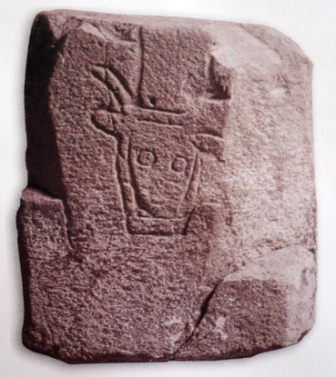
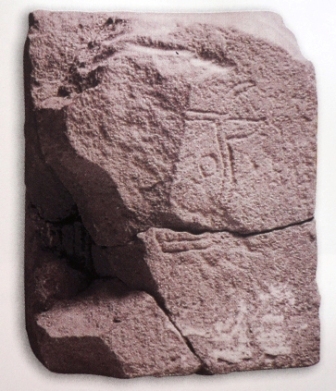
Arellano taurobolio aras
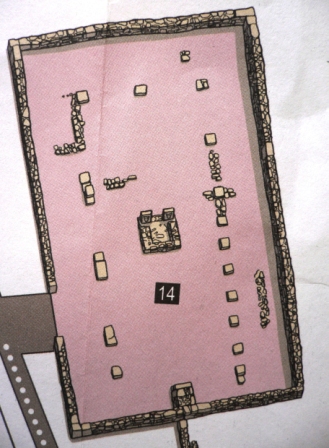
Plan of the building that housed the taurobolio.
(Photo: Panel of the villa of Arellano. Gabinete Trama)
It is really striking the worship of the goddess Cybele in the villa of Arellano but it should be noted that in the theme of the mosaics that covered the floors of various rooms is very present the myth of Cybele and Attis. According to legend, Cybele had fallen in love with Attis, a teenager of great beauty. The goddess showered him with gifts and made him promise that he would always remain at her service and that he would never love another woman. But one day Attis met the nymph Sangaritis and betrayed Cybele. The goddess upon learning what happened killed the nymph and lost the spirit of Attis who, in a fit of madness, cut off his genitals. The taurobolio was a ceremony coming from Asia Minor; but it was joined to several cults, in the first place to that of Cybele.
The ceremony had established a rite in which the person who was to receive the baptism of blood entered a pit covered with a perforated floor, then the bull was led on the ground and was sacrificed by plunging a long knife into the chest of the animal. The blood that came out would seep into the pit covering the devotee underneath. Then the personage came out of the pit and was presented in front of the people as a new being.
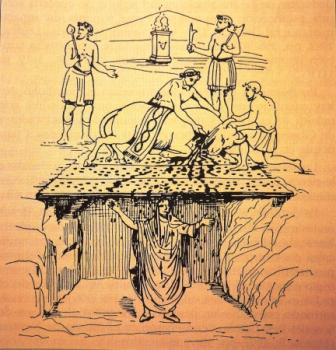
Rite of the taurobolio. Sacrifice of the bull and baptism of blood.
This sacrifice was preceded by a procession with music, followed by the worshippers of the goddess Cybele, with those destined to participate in the taurobolio in first place. These curious practices must have survived in the town of Arellano until the V century, since the aristocracy that lived there was the conservative of the traditional religious values, perhaps as a reaction to the policy of the Christian emperors.
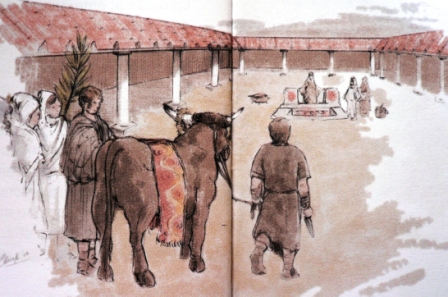
Procession prior to the rite of the taurabolio.
(Photo: Exhibition panels of the village of Arellano.
Gabinete Trama)
Currently, the Roman villa of Arellano has been recovered, which has allowed us to learn about the historical development of this place that, in the early days of the Empire, was dedicated to agricultural production and had a complete system for the production of wine, in addition, over the centuries it ended up becoming a luxurious country house residency program of a family of the local aristocracy. All the ruins, with the exception of the Taurobolio and a stable, are covered by a building of recent construction that aims to protect the archaeological Structures of its exhibition to the weather and to facilitate the visitors the observation of the Roman villa through a route of footbridges and the observation of didactic murals made by the Gabinete Trama. In this way, this important archaeological site has been transformed into an interpretation center that will allow travelers to learn about the history of this rural villa that in the 4th century A.D. became a religious place of worship to Cybele and Attis.
bibliography
-MEZQUÍRIZ IRUJO, M. A., La villa romana de Arellano, Pamplona, Government of Navarra, 2003.
